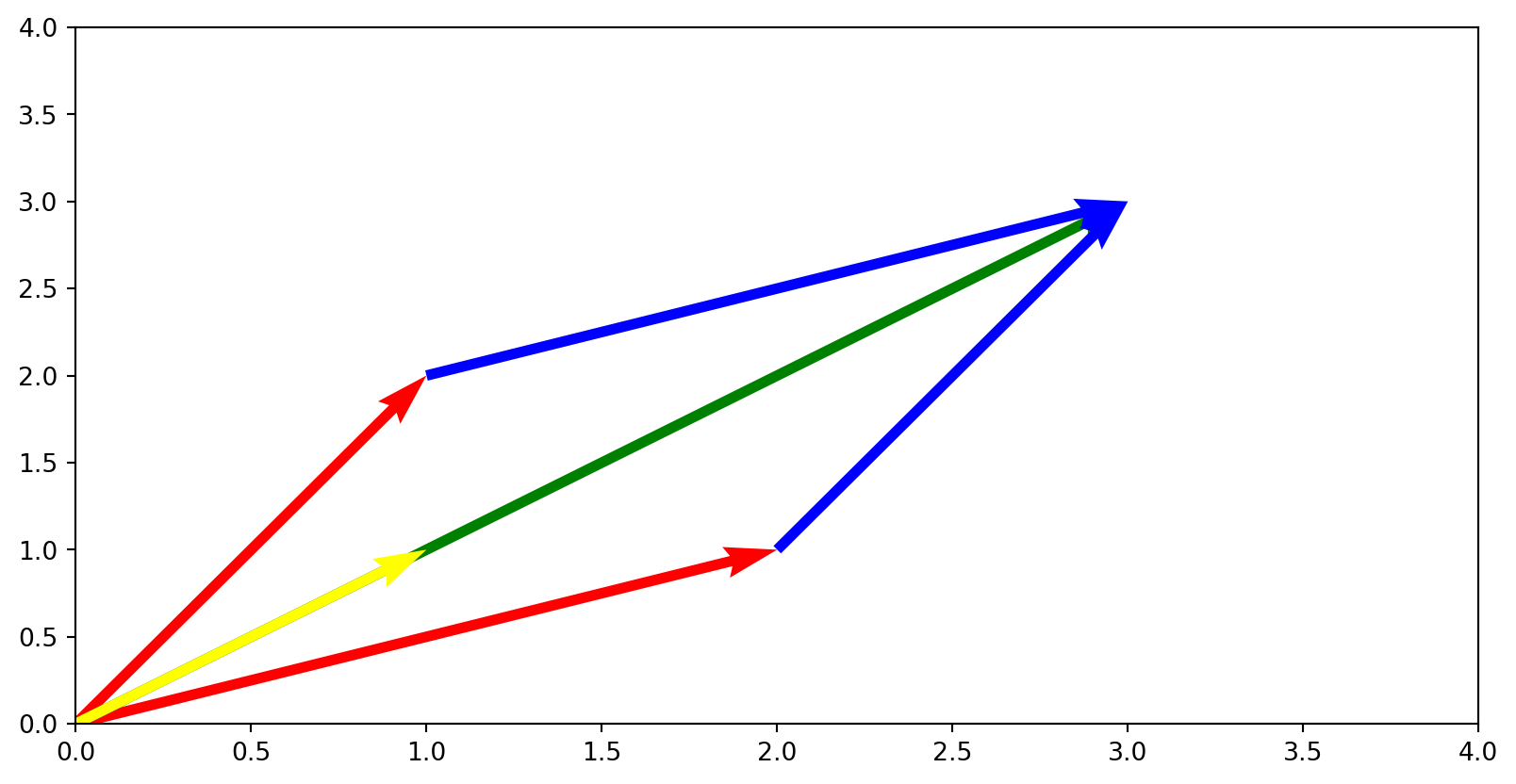\[F(n+2) = F(n+1) + F(n)\]
\[ \begin{bmatrix}F(1) \\ F(2)\end{bmatrix} = \begin{bmatrix}1 \\ 1\end{bmatrix}\]
\[ \begin{bmatrix}F(2) \\ F(3)\end{bmatrix} = \begin{bmatrix}0 & 1 \\1 & 1\end{bmatrix} \begin{bmatrix}F(1) \\ F(2)\end{bmatrix} = \begin{bmatrix}0 & 1 \\1 & 1\end{bmatrix} \begin{bmatrix}1 \\ 1\end{bmatrix}\]
\[ \begin{bmatrix}F(3) \\ F(4)\end{bmatrix} = \begin{bmatrix}0 & 1 \\1 & 1\end{bmatrix} \begin{bmatrix}F(2) \\ F(3)\end{bmatrix} = \begin{bmatrix}0 & 1 \\1 & 1\end{bmatrix}^{2} \begin{bmatrix}1 \\ 1\end{bmatrix}\]
\[ \begin{bmatrix}F(4) \\ F(5)\end{bmatrix} = \begin{bmatrix}0 & 1 \\1 & 1\end{bmatrix} \begin{bmatrix}F(3) \\ F(4)\end{bmatrix} = \begin{bmatrix}0 & 1 \\1 & 1\end{bmatrix}^{3} \begin{bmatrix}1 \\ 1\end{bmatrix}\]
\[\vdots\]
\[ \begin{bmatrix}F(n) \\ F(n+1)\end{bmatrix} = \begin{bmatrix}0 & 1 \\1 & 1\end{bmatrix} \begin{bmatrix}F(2) \\ F(3)\end{bmatrix}= \begin{bmatrix}0 & 1 \\1 & 1\end{bmatrix}^{n-1} \begin{bmatrix}1 \\ 1\end{bmatrix}\]
considerando \(A = \begin{bmatrix}0 & 1 \\ 1 & 1\end{bmatrix}\), o problema se resume a resolver \(A^{n-1}\). Sabemos fazer essa conta?
Polinômio característico: \(\lambda^2 - \lambda -1=0\)
Autovalores: \[\lambda_1=\frac{1}{2} + \frac{1}{2}\sqrt{5}\] \[\lambda_2=\frac{1}{2} - \frac{1}{2}\sqrt{5}\]
Autovetores:
\[v_1 = \begin{bmatrix}0 & 1 \\1 & 1\end{bmatrix} \begin{bmatrix}x_1 \\ x_2\end{bmatrix} = \lambda_1\begin{bmatrix}x_1 \\ x_2\end{bmatrix}\]
\[v_2 = \begin{bmatrix}0 & 1 \\1 & 1\end{bmatrix} \begin{bmatrix}y_1 \\ y_2\end{bmatrix} = \lambda_2\begin{bmatrix}y_1 \\ y_2\end{bmatrix}\]
\[v_1 = x_1\begin{bmatrix}0 \\ 1\end{bmatrix} + x_2 \begin{bmatrix}1 \\ 1\end{bmatrix} = \left(\frac{1}{2} + \frac{1}{2}\sqrt{5}\right)\begin{bmatrix}x_1 \\ x_2\end{bmatrix}\]
\[v_2 = y_1\begin{bmatrix}0 \\ 1\end{bmatrix} + y_2 \begin{bmatrix}1 \\ 1\end{bmatrix} = \left(\frac{1}{2} - \frac{1}{2}\sqrt{5}\right)\begin{bmatrix}y_1 \\ y_2\end{bmatrix}\]
- resolvendo o sistema acima (pode usar o pacote linag do python para calcular os autovalores e autovetores): \[ v_1 = \begin{bmatrix}1, & \frac{1}{2} + \frac{1}{2}\sqrt{5}\end{bmatrix}\]
\[ v_2 = \begin{bmatrix}1, & \frac{1}{2} - \frac{1}{2}\sqrt{5}\end{bmatrix}\]
- Assim, podemos reescrever
\[ A^{n-1} = \begin{bmatrix}1 & 1 \\ \frac{1}{2} + \frac{1}{2}\sqrt{5} & \frac{1}{2} - \frac{1}{2}\sqrt{5}\end{bmatrix} \begin{bmatrix}\frac{1}{2} + \frac{1}{2}\sqrt{5} & 0 \\ 0 & \frac{1}{2} - \frac{1}{2}\sqrt{5}\end{bmatrix}^{n-1}\begin{bmatrix}1 & 1 \\ \frac{1}{2} + \frac{1}{2}\sqrt{5} & \frac{1}{2} - \frac{1}{2}\sqrt{5}\end{bmatrix}^{-1}\]
\[\begin{bmatrix}F(n) \\ F(n+1)\end{bmatrix} = A^{n-1}\begin{bmatrix}1 \\ 1\end{bmatrix}\]



